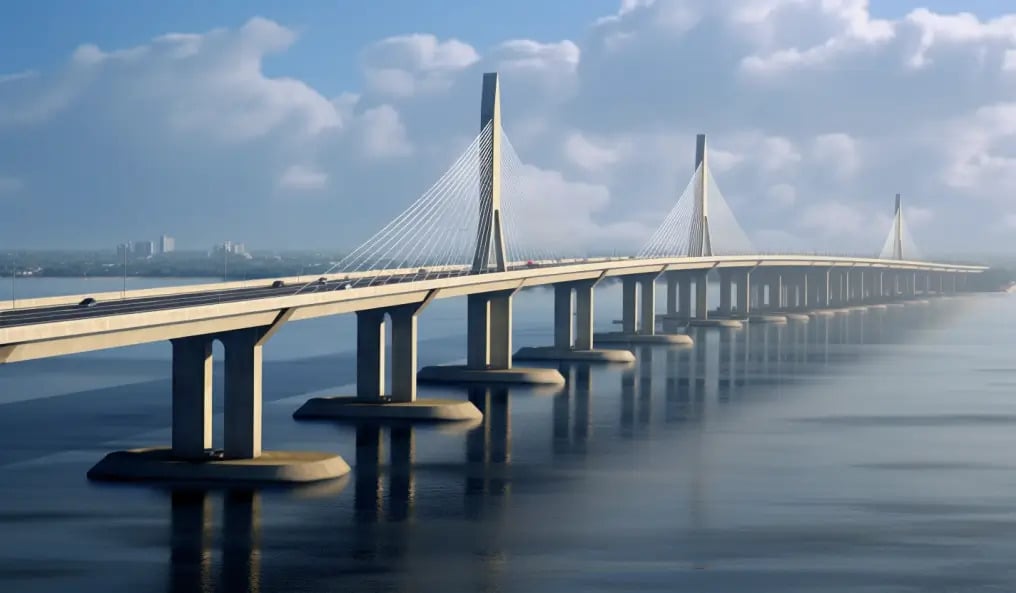Last month, Mr. Hiroshi Ogihara, the Head of Mission in the Japanese Embassy in Kenya, led a delegation to discuss the implementation of the Mombasa Gate Bridge project with Engineer Joseph Mbugua, the Principal Secretary for Roads.
The delegation, including Mr. Shubane Makoer from the Japanese International Cooperation Agency (JICA), deliberated on the necessary steps to kickstart the project, which aims to bridge Mombasa Island and South Coast, enhancing connectivity over the Likoni Channel.
Table of Contents
Boosting Transportation and Real Estate
The Mombasa Gate Bridge Construction Project, funded by the Japanese Government in collaboration with the Government of Kenya (GoK) through the Kenya National Highway Authority (KeNHA), is poised to transform the transportation landscape in the region.
By providing a direct road link between the island and the mainland, currently served by ferries operated by the Kenya Ports Authority, the project promises to catalyze real estate development in the surrounding areas.
It is projected that better real estate developments will start in the area as movement between the Mombasa island and South Coast will improve.
Funding and Immediate Construction Commencement
In 2019, the National Treasury of Kenya and the then Japanese ambassador to Kenya, Ryoichi Horie, inked a loan agreement, clearing the path for immediate construction commencement in 2021. However, the construction faced several setbacks that delayed its commencement.
This development is particularly welcomed by stakeholders in the tourism industry on the South Coast, anticipating improved accessibility and visitor influx.
Cabinet Secretary for Transport Kipchumba Murkomen assured that all the plans of the bridge’s construction, which will be the second longest in Africa, have been approved and will take approximately 3 years to complete.
READ ALSO: Third Longest Bridge in Kenya – Athi River Super Bridge
Infrastructure Details and Environmental Impact
Spanning 1.4 kilometers, with a 660-meter main span, the cable-stayed bridge will accommodate four traffic lanes, standing at a height of 69 meters at its midpoint to allow maritime traffic passage beneath. This infrastructure endeavor, expected to span 36 months, aligns with ongoing efforts such as the nearing completion of the Dongo Kundu road bypass, poised to amplify trade and tourism activities in the region. Beyond its transportation benefits, the Mombasa Gate Bridge holds promise for environmental enhancement, alleviating water flow constraints caused by the existing causeway.
Optimism and Commitment
The Japanese delegation expressed optimism following fruitful bilateral discussions and the Quality Infrastructure Conference held in Nairobi. Engineer Mbugua reiterated the Ministry’s commitment to prompt project initiation, emphasizing its potential to employ approximately 80,000 Kenyans during construction and inject significant income into the local economy.
However, the idea of the bridge was first conceived 40 years back in 1984. Many residents in the area are cautiously optimistic and say that they will only believe when they see the bridge standing.
Symbolic Significance and Transformation
The bridge’s symbolic significance as an iconic landmark and potential tourist attraction in sub-Saharan Africa underscores its multifaceted impact. With plans aligning swiftly and support pledged from all quarters, the face of Mombasa is on the brink of a transformative shift, promising newfound opportunities for both residents and investors alike.
A feasibility study done by the Japanese International Cooperation Agency shows that the construction of the bridge and the entire project will require approximately 155 acres of land, which will displace 1,706 households and numerous business and government establishments.
READ ALSO: Nyali Real Estate Demand Soars by 34%



